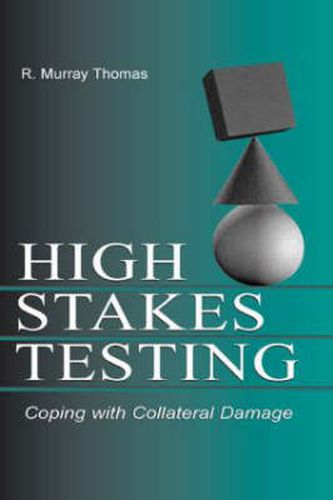Readings Newsletter
Become a Readings Member to make your shopping experience even easier.
Sign in or sign up for free!
You’re not far away from qualifying for FREE standard shipping within Australia
You’ve qualified for FREE standard shipping within Australia
The cart is loading…






The federal government’s No Child Left Behind Act has thrust high-stakes testing (its goals, methods, and consequences) into the educational limelight. The four-fold purpose of this book is to: 1) describe the nature of high-stakes testing; 2) identify types of collateral damage that have attended the testing programs; 3) analyze methods different groups of people have chosen for coping with the damage; and 4) suggest lessons to be learned from the high-stakes-testing experience. The six groups of people whose coping strategies are inspected include: a) politicians and their staffs; b) educational administrators and their staffs; c) parents and the public; d) test makers and test administrators; e) teachers; and f) students. Importantly, the author avoids aligning himself with the test-bashing rhetoric of those who oppose high-stakes testing, especially the No Child Left Behind Act.
$9.00 standard shipping within Australia
FREE standard shipping within Australia for orders over $100.00
Express & International shipping calculated at checkout
The federal government’s No Child Left Behind Act has thrust high-stakes testing (its goals, methods, and consequences) into the educational limelight. The four-fold purpose of this book is to: 1) describe the nature of high-stakes testing; 2) identify types of collateral damage that have attended the testing programs; 3) analyze methods different groups of people have chosen for coping with the damage; and 4) suggest lessons to be learned from the high-stakes-testing experience. The six groups of people whose coping strategies are inspected include: a) politicians and their staffs; b) educational administrators and their staffs; c) parents and the public; d) test makers and test administrators; e) teachers; and f) students. Importantly, the author avoids aligning himself with the test-bashing rhetoric of those who oppose high-stakes testing, especially the No Child Left Behind Act.